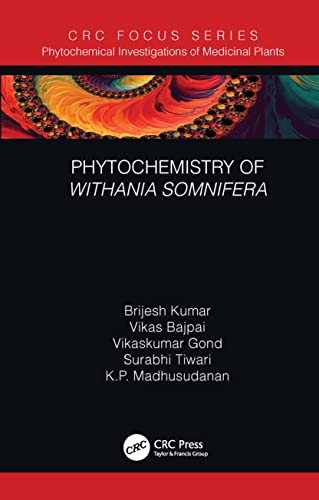

Most ebook files are in PDF format, so you can easily read them using various software such as Foxit Reader or directly on the Google Chrome browser.
Some ebook files are released by publishers in other formats such as .awz, .mobi, .epub, .fb2, etc. You may need to install specific software to read these formats on mobile/PC, such as Calibre.
Please read the tutorial at this link: https://ebookbell.com/faq
We offer FREE conversion to the popular formats you request; however, this may take some time. Therefore, right after payment, please email us, and we will try to provide the service as quickly as possible.
For some exceptional file formats or broken links (if any), please refrain from opening any disputes. Instead, email us first, and we will try to assist within a maximum of 6 hours.
EbookBell Team

4.7
106 reviewsWithania is a genus of the nightshade family of flowering plants distributed in the subtropical regions from the Mediterranean to South East Asia. Only two species,W. somniferaandW. coagulans, are found in India. The most common species isW. somnifera(WS), which occurs naturally in the subtropical regions from the Mediterranean through Africa to the Middle East, the Indian Continent, Sri Lanka, South East Asia, subtropical America and Australia. It is a perennial shrub that grows to 75 cm (.75 m) tall with tomentose branches, oval yellowish green leaves, orange red berries and a papery calyx, and it survives harsher climatic conditions. In Ayurveda it is believed the plants which survive harsh conditions have strong healing and tonification properties. The main bioactive phytoconstituents of WS are withanolides (steroidal lactones), alkaloids, flavonoids, sterols, phenolics and others. Among the various withanolides, withanolide A, withaferin A, withanone and withanolide D are the most abundant, having various activities. WS is a wonder herb with a broad spectrum of pharmacological properties, such as antioxidant, antidepressant, aphrodisiac, antiulcerogenic, antivenom, anti-inflammatory, antiarthritic, anticancer, antiparasitic, antimicrobial, anticancerous, antidiabetic, antitumor, hemopoetic neuroregenerative, immunomodulatory, cardioprotective, radio-sensitizing, rejuvenating, antistress, sedative, hypoglycemic, thyroprotective, adaptogenic, antispasmodic, immunomodulatory, immunostimulant and antiaging properties. The simultaneous quantitative analysis of six major bioactive withanolides in five varieties of WS and in different plant parts (root, stem and leaf) of WS was accomplished. This method is also applicable to control the quality of commercially formulated products which contain WS bioactive compounds. Results indicated the WS variety NMITLI-135 showed the maximum abundance of withanolides at pH 8.5, EC-0.5 dS m-1, ESP-13 in sodic soil. Our results showed this readily available, rapid and reliable method is suitable for the routine analysis and effective quality control of raw materials and finished products. FEATURES